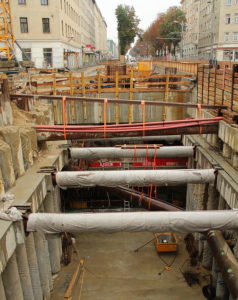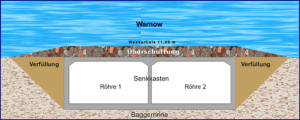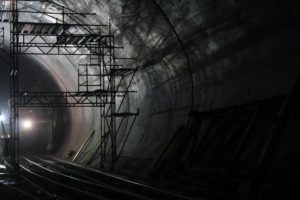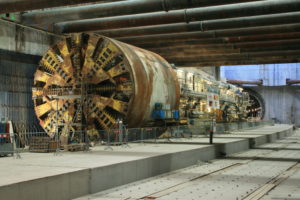In the cut-and-cover method, a digger or a milling machine cuts slots in the ground that are then filled with concrete.
These will later form the side walls of the underground tunnel. A ‘cover’ is then placed over these and the road restored, enabling it to be used again by surface traffic. Only one point remains accessible from which the rest of the earth can be excavated.
The cut-and-cover method is suitable for shallow track sections running beneath a road or undeveloped land.
The cut-and-cover method is being used to build the stations for the U2/U5 intersections and the section of the U5 running along Landesgerichtsstraße.
Also along the Favoritenstraße during the extension for the underground U1 in the direction Oberlaa, the cut-and-cover method was used.
Cut-and-cover method at the station U1 Troststrasse
Von NÖLB Mh – Eigenes Werk, CC BY-SA 3.0, https://commons.wikimedia.org/w/index.php?curid=29392331
Cut-and-cover tunnelling method, schematic representation
Von Ch.Pagenkopf – Eigenes Werk: Zeichnung nach Quellenangabe, CC BY-SA 3.0, https://commons.wikimedia.org/w/index.php?curid=3525188
Application
Diaphragm walls are excavated and filled with concrete.
The road surface is largely restored: Traffic can flow again and underground work on the tunnel continues.
The underground excavation is completed.
The tunnel receives a floor slab and the interior work can start.





